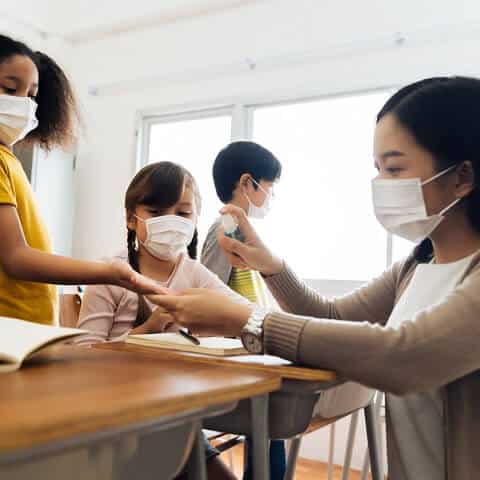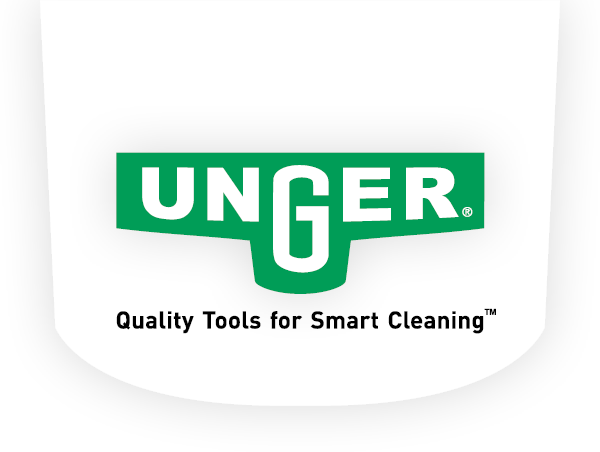NEW! Powerful Nano Filtration with Unger's HydroPower® Nano See The Product

Indoor Air Quality Tools for Schools in the Post-Pandemic Setting
According to the U.S. Department of Education, the average school building is 42 years old. After 40 years a school building begins to rapidly deteriorate if it is not properly maintained, negatively impacting a major component of a healthy school environment – the indoor air quality (IAQ.). Even before the pandemic, nearly half of U.S. schools reported indoor air quality problems that put the health of students and staff at risk.
With the country now prioritizing creating healthy school environments in the wake of the pandemic, indoor air quality is an urgent matter for facility managers. Taking a proactive approach to preventing ventilation problems and maintaining healthy IAQ levels will not only help you mitigate the immediate student health risks and staff absenteeism due to sickness, but also save your school significant costs in the long run.
No Excuse for Poor Ventilation
Funds available through the American Rescue Plan (ARP) can be used to improve indoor air quality and are part of the Department of Education’s broader efforts to support schools as they prepare to sustain in-person learning during the pandemic. These funds help schools take immediate action to improve indoor air quality, such as the inspection, testing, maintenance, repair, replacement, and upgrading of projects. This can include system upgrades, filtering, purification, and other air cleaning fans, and window and door repair.
With this funding, it’s hard to argue why an educational facility cannot have a modern, properly working ventilation system to protect the health of its occupants.
Improving Ventilation in Schools
Adequate ventilation is an important COVID-19 prevention strategy for all schools, especially in areas of the school where students may not be able to wear masks, such as in the cafeteria when eating. CDC guidelines provide the following building recommendations to improve ventilation in schools:
- Bring in as much outdoor air as possible. Even cracking open a window or door in the classroom helps increase outdoor airflow, which helps reduce the potential concentration of virus particles in the air. Safely secure fans in a window to blow potentially contaminated air out.
- Ensure Heating, Ventilation, and Air Conditioning (HVAC) settings are maximizing ventilation. Most importantly, make sure the school’s ventilation systems are serviced and meeting code requirements. They should provide acceptable indoor air quality, as defined by ASHRAE Standard 62.1external icon. The HVAC system should also be set to bring in as much outdoor air as the system will safely allow. More air flow encourages air mixing and ensures any recirculated air passes through the filter more frequently. You can also:
- Disable demand-controlled ventilation (DCV) controlsthat reduce air supply based on occupancy or temperature. This way the air supply will remain constant throughout the day.
- For simple HVAC systems controlled by a thermostat, setting the fan control switch from “Auto” to “On” will ensure the HVAC system provides continuous air filtration and distribution.
- Consider running the HVAC system at maximum outside airflow for 2 hours before and after the building is occupiedto refresh air before arrival and remove remaining particles at the end of the day.
- Filter and/or clean the air in your school. Basics include making sure the filters are sized, installed, and replaced according to the manufacturer’s instructions. Schools can also consider portable air cleaners that use high-efficiency particulate air (HEPA) filters to enhance air cleaning wherever possible, especially in higher-risk areas such as a nurse’s office or sick/isolation room.
Minimizing Airborne Cleaning Chemicals
While ventilation investments build a critical foundation for meeting schools’ IAQ requirements, further action is needed to improve the indoor learning environment. For facility managers, the task of supporting a healthier school environment relies partially on the indoor air quality tools and equipment they are using to execute their cleaning and disinfecting procedures.
Adding to the issue of unhealthy indoor air and inadequate ventilation, is the introduction of chemicals from cleaning and maintenance routines. Many cleaning supplies can release dangerous chemicals, including volatile organic compounds (VOCs). VOCs and other chemicals released when using cleaning supplies indoors contribute to poorer air quality and potentially respiratory problems, allergic reactions and headaches. For schools in particular, jeopardized air quality has been linked to poor concentration and test performance in students.
To decrease the risk of this scenario, facility managers can source indoor air quality tools that achieve the desired results without the introduction of unnecessary airborne chemicals. For example, sourcing a safer indoor window cleaning option that requires minimal chemical usage and limits the introduction of airborne chemicals. Window cleaning systems such as the Unger Stingray are designed to use fewer chemicals (as much as 39%) than window cleaning that relies on the traditional cloth and spray bottle. The Stingray’s unique design also includes an enclosed spray nozzle, which keeps any cleaning chemicals used from becoming airborne in the process.
There’s a Better Way to Clean with Indoor Air Quality Tools
Failure to respond to poor indoor air quality in schools can negatively impact both the building and its occupants, in ways more severe than others, such as short- and long-term health problems. The health and comfort of students and teachers are among the many factors that contribute to learning and productivity in the classroom, which in turn affect performance and achievement. Unger offers a wide variety of school cleaning equipment designed to help you achieve good IAQ and healthier learning environments.
Schedule a 1-on-1 conversation with your Unger Sales Rep today to discuss how you can clean your school faster, safer and better!
